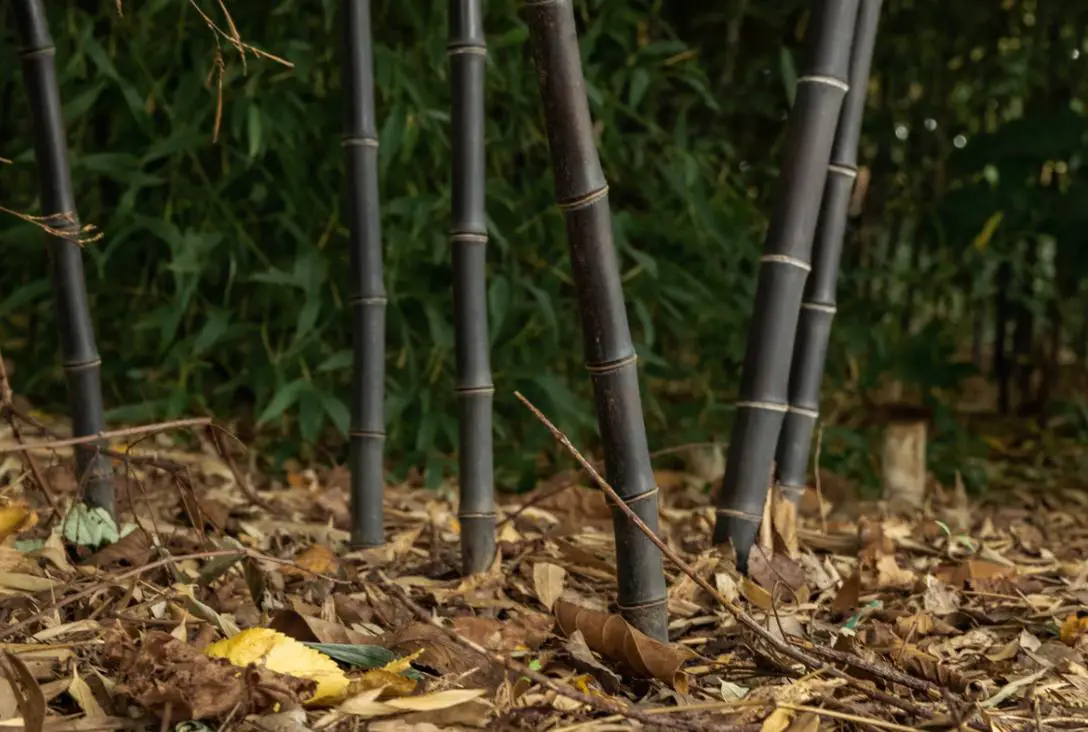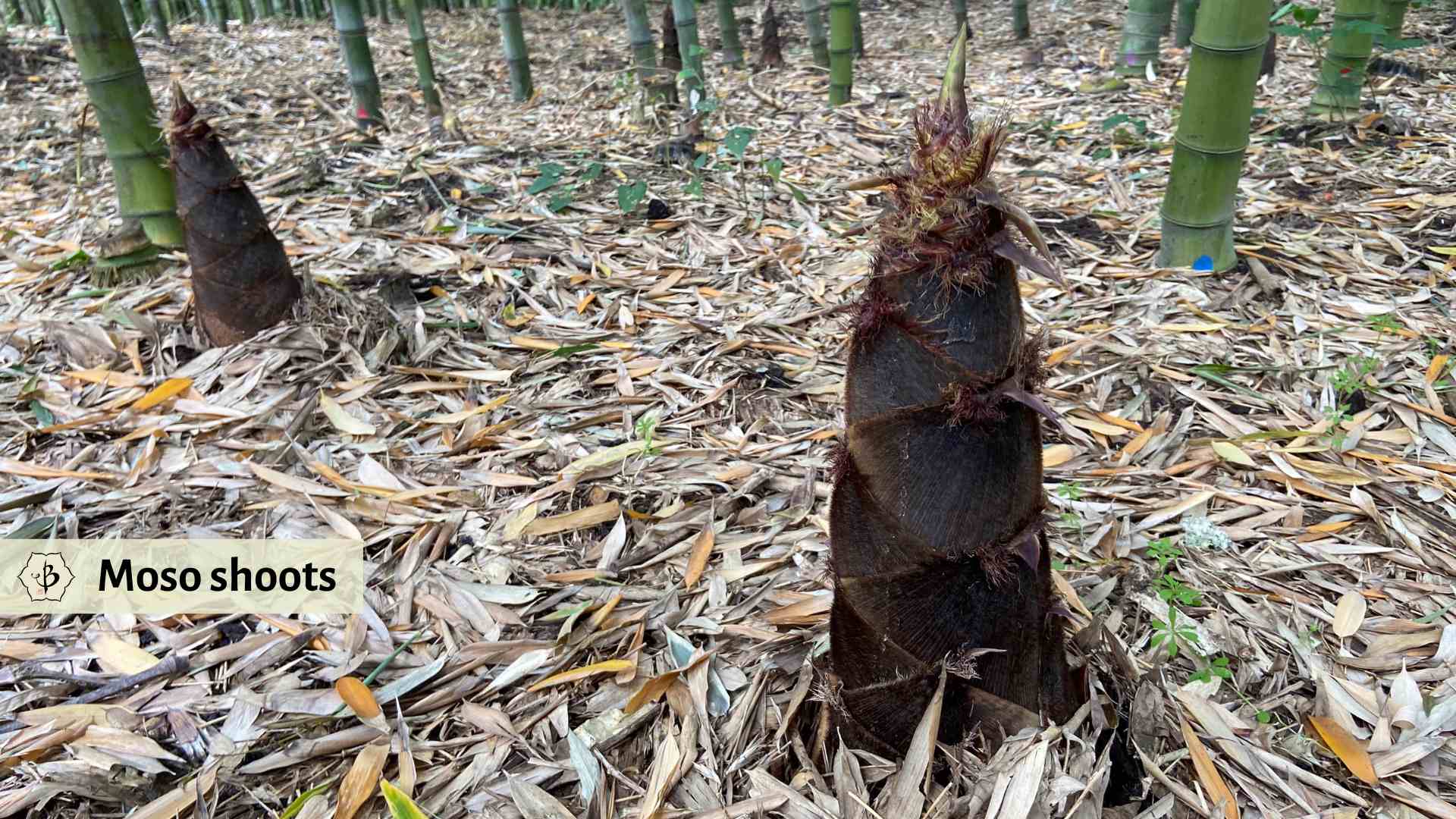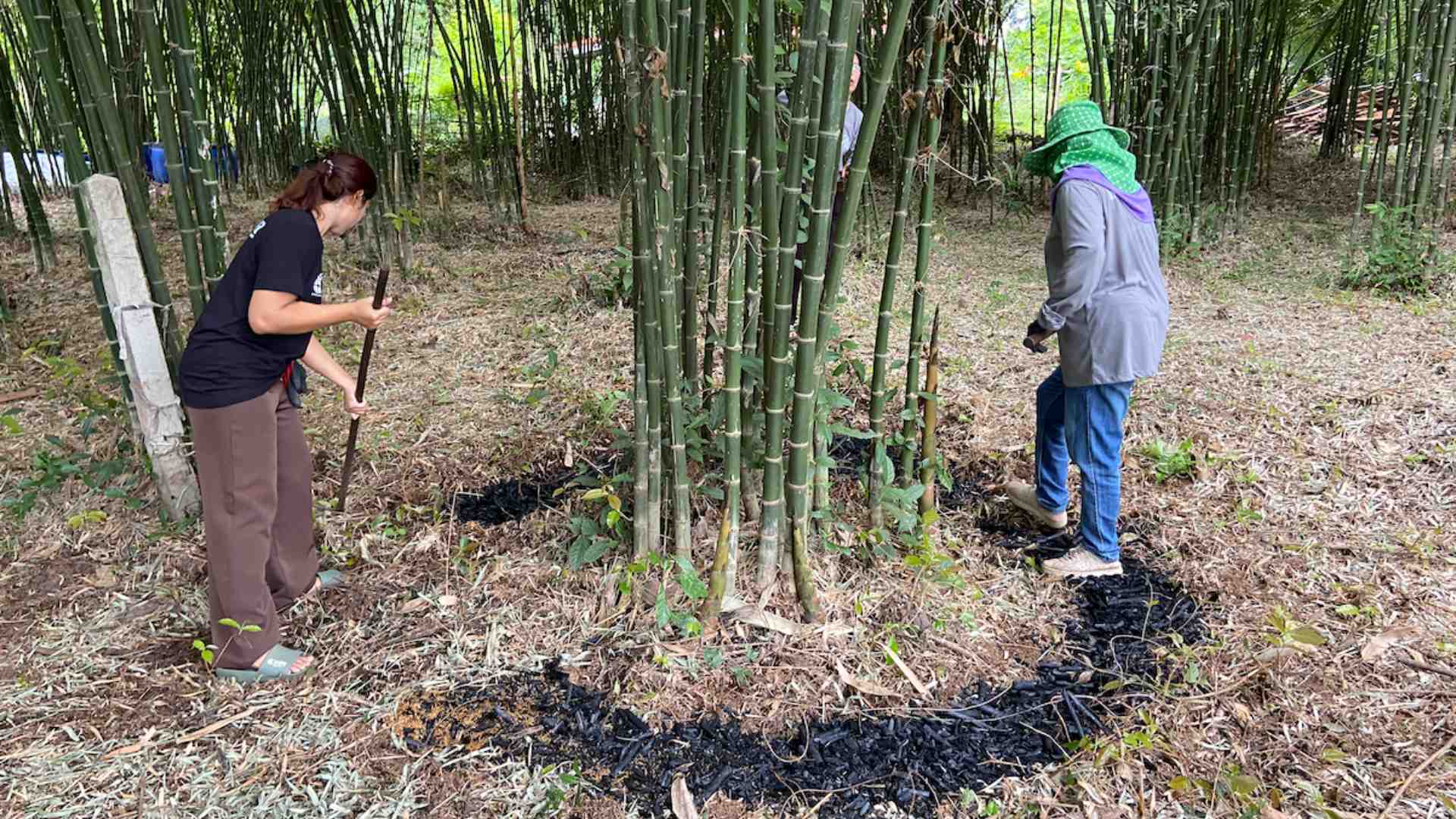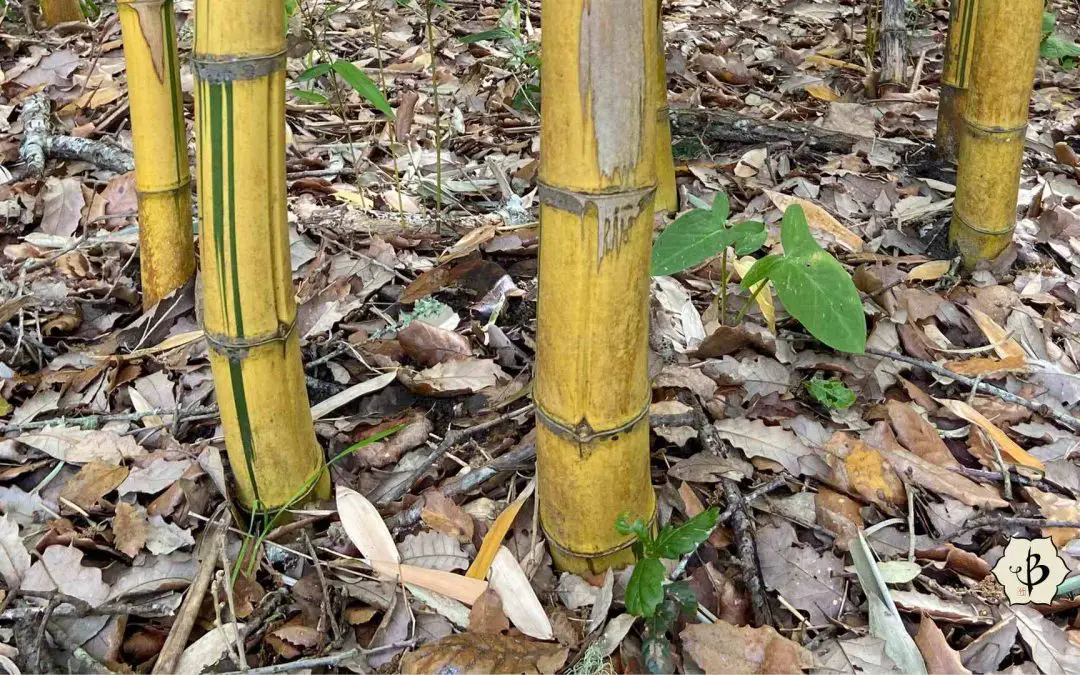After everything bamboo has done for us, it’s only natural that you might want to do something for your bamboo in return. Besides watering it and giving it an occasional pruning, there’s probably nothing the bamboo appreciates more than a good mulching. Bamboo requires relatively little in the way of care and nourishment, but a modest layer of mulch can make a significant difference.
A good layer of mulch, about 3 to 5 inches thick, is one of the best things you can do for your bamboo grove. Covering the ground with bark or wood chips is the ideal way to insulate the shallow roots of bamboo, helping them to stay warm in the winter and to retain moisture in the dry season. Fresh mulch also makes the garden more attractive and helps to suppress unwanted weeds. Bamboo is not especially sensitive, and you can even use pine needles and oily leaves that many trees and shrubs find bothersome.
NOTE: This article first appeared in October 2021, most recently updated in May 2024.

Why mulch your bamboo
Mulch is an important additive for any garden, and bamboo is no exception. When done properly, mulching provides many benefits. It keeps plants happier and healthier, and makes the garden and the pathways look prettier, and it makes the gardener’s job a little easier.
Moisture
In a drier climate, mulch is one of the best ways to help the soil retain moisture and prevent evaporation. Keep in mind, it’s critical to have well-drained soil so the roots don’t get soggy. It’s also important not to overwater on top of the mulch, which would allow the mulch to soak up all the moisture.
For best results, it’s good to spread the mulch an inch or so away from the stems (culms). This way you can water directly onto the soil, at the base of the culms, rather than the water having to percolate through the mulch. It also gives the culms a little breathing room.
In sandy soil and hot weather, the moisture vanishes quickly. Mulch not only prevents evaporation, but as the mulch breaks down, it fortifies the topsoil. And a heartier, more nutrient-rich topsoil will also retain moisture better than the sand.
See also: Watering your bamboo.

Insulation for winter
In cooler climates, or places with freezing, snowy winters, mulch is probably your best defense against the cold. It’s important to select the right species of bamboo, for starters, as some varieties are far more cold-tolerant than others. But in an unusually cold winter, or when your bamboo’s cold-hardiness is getting pushed to the limit, a protective layer of mulch will help it survive till spring.
Even when an abnormally cold winter freezes some of your leaves and stems, the roots are likely to survive if they are well insulated in the ground. You might be surprised to see a fresh batch of shoots sprouting up once the ice has thawed and the snow has melted.
Weed abatement
Bamboo typically grows pretty thick, leaving little room for weeds. But mulching is just one more way to keep the weeds down. Especially if you have a mix of other plants and gaps between the plants, you can pile the mulch higher to stop the weeds. Unless you just love pulling weeds all summer long, you’ll find that one weekend of mulching will save you a lot of time and toil in the long run.
I don’t usually use a lot of stepping stones and hardscaping when I garden, so mulch is an effective way to cover the trails and paths between the plants. Again, in these areas where nothing is growing, you can pile the wood chips extra high and not have to worry about weeds for many months.

What to use and how much to mulch
Bamboo isn’t very finicky, so certain things like pine needles and oak leaves, which bother many plants, are not a problem with bamboo. Even some eucalyptus debris is ok, if you have no other options. Eucalyptus leaves and bark are allelopathic, so they have toxic oils that most other plants cannot withstand. Their effect on bamboo, however, is minimal.
It’s easiest to source your mulch based on what’s available in your area. If you have a lot of bamboo, then you probably have a good supply of bamboo leaves, which make pretty mulch already.

Landscapers and arborists often have a lot of wood chips on hand from local jobs. If you live on acreage or have a farm, you might have your own supply of wood chips and dry plant debris. Just make sure the pieces are small enough to break down.
A few inches of mulch or wood chips is ideal if you’re placing it directly over the bamboo roots. If you overdo it, you can smother the bamboo and make it hard for new shoots to emerge. If there’s too much mulch directly around the culms, it can also cause moisture problems and rotting around the stems.
If you’re dealing with younger bamboo or dwarf bamboo with smaller culms, you should mulch more lightly. Just an inch or two of wood chips should suffice. Or use something lightweight like straw or grass cuttings.

Richer mulch mixes
When I lived on the Central Coast in California, there was a mushroom farm not too far, so I was sometimes able to get mushroom compost. The spent mushroom matter made for the perfect mulch. Extremely high in nutrients, it was also thick and fluffy. So it effectively suppressed the weeds but also broke down quickly to nourish our sandy soil. Mushroom compost is nice over the roots of the plants, but not too close to the stems, and not on the garden paths and walkways.
If you have access to a good source of horse manure, that also works well as a nutrient-rich mulch. Cow manure works too, but only if it’s aged at least a year. Otherwise, it’s too hot on the roots and might fry your plants. After spreading manure around, you can sprinkle some bamboo leaves over it to make it look more natural.
Maintaining a healthy bamboo
As we said earlier, bamboo has pretty minimal requirements in terms of care and maintenance. But there are a couple of other things to pay attention to if you want to have a healthy and attractive bamboo plant.

Fertilizing
It’s best to do your fertilizing before you mulch, so the nutrients can better penetrate the soil. Sometimes, if you’re using mushroom compost or horse manure, which are both great for bamboo, those fertilizers also serve as good mulch at the same time.
See also: Fertilizing your bamboo.
Pruning
Pruning is another important chore if you’re maintaining a bamboo garden. But compared to pruning roses or bonsai trees, it’s pretty easy. The most important thing is to look around the bamboo thicket for old, rotting culms. After several years, the culms start to age and crack.
For both the health and the beauty of the bamboo, it’s a good idea to cut out those old culms. Saw them off as close to the ground as possible. Then you can use the old stalks as garden stakes or for firewood. Or let them break down in the compost, and eventually, you could have some bamboo wood chips.
Containment
Probably the most important task for the bamboo gardener is to contain the plants and monitor the roots, to prevent them from spreading invasively into other parts of the garden or into your neighbors’ gardens. We’ve written several articles on these issues and containment strategies. See the links below.

More bamboo growing tips
- Running bamboo vs Clumping bamboo
- Best tools for bamboo gardening
- Digging a containment trench around your bamboo
- Installing a root barrier for best containment
- Troubleshooting tips for bamboo
FEATURE IMAGE: Robert Young bamboo with a nice bed of mulch. Photo by Fred Hornaday.

























